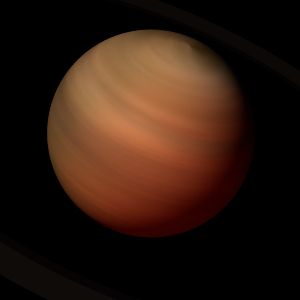|
|
Space Astro
|
Info for exoplanet "Erepu"
| Scientific (actual) data |
|---|
| Name | NGC 2423 3 b |
| Planet status | Confirmed |
| Mass sini | 10.6 |
| Orbital period | 714.3 |
| Semi major axis | 2.1 |
| Orbit eccentricity | 0.21 |
| Angular distance | 0.002742 |
| Discovered | 2007 |
| Updated | 2007-11-26 |
| Omega | 18 |
| Tperi | 53213 |
| Publication | Published in a refereed paper |
| Detection type | Radial Velocity |
| Star name | NGC 2423 3 |
| Right ascension | 114.29° |
| Declination | -13.91° |
| Mag v | 9.45 |
| Star distance | 766 |
| Star metallicity | 0.14 |
| Star mass | 2.4 |
| Star age | 0.75 |
| Wikipedia article | NGC 2423 3 b |
Back
| |
| Fictional info (?) |
|---|
| Suggested name | Erepu |
| Planet type | Cold planet |
|
| Atmosphere | Hydrogen peroxide | 72% |
| Ethane | 25% |
| Oxygen | 2.4% |
| Helium | 0.19% |
| Sulfur dioxide | 0.0041% |
| Atmospheric pressure | 0.9 bar |
 |
| No known satellites |
| Google search for Erepu |
|
Website by Joachim Michaelis
|
|
|
|